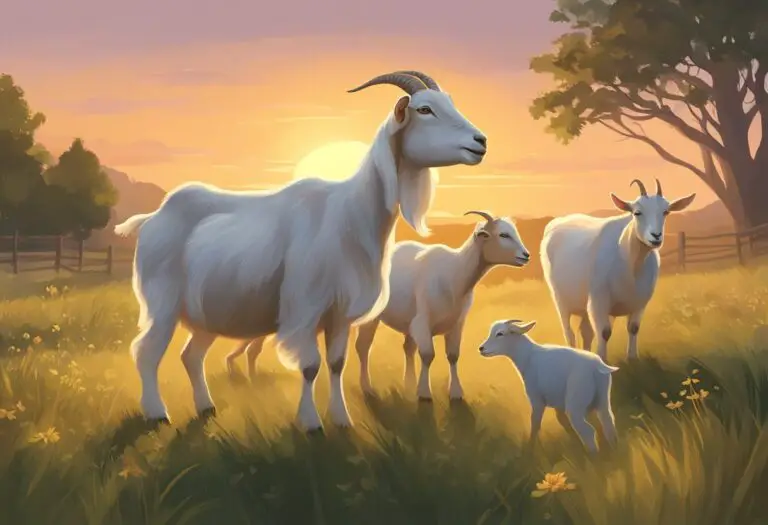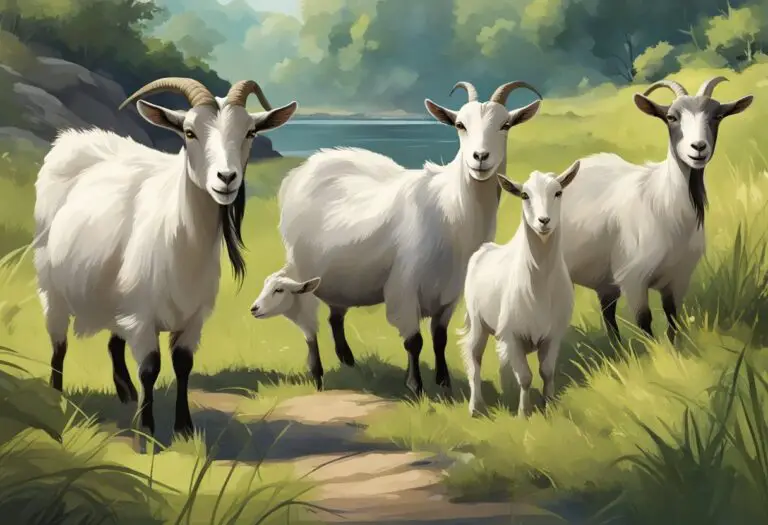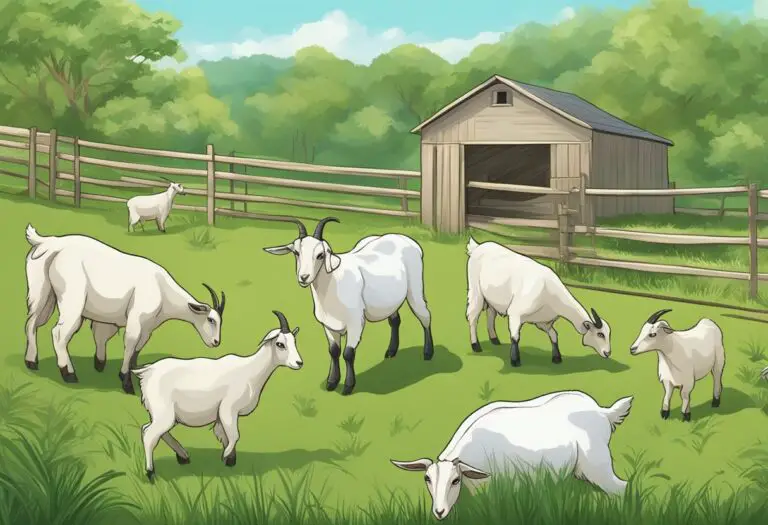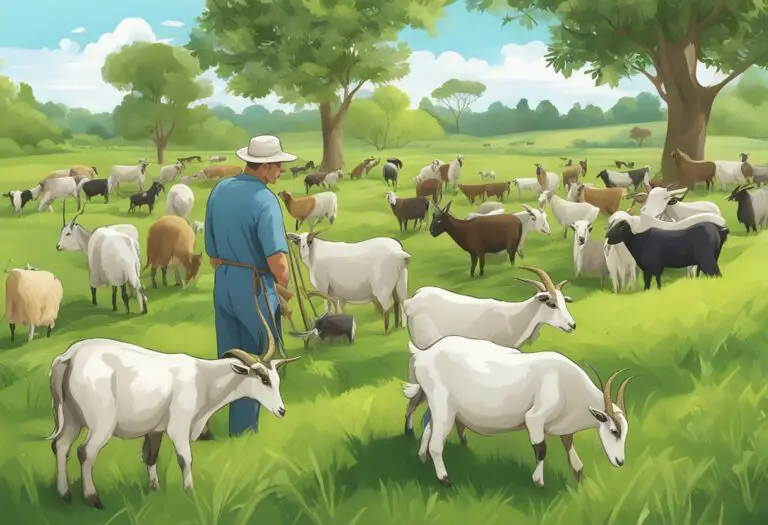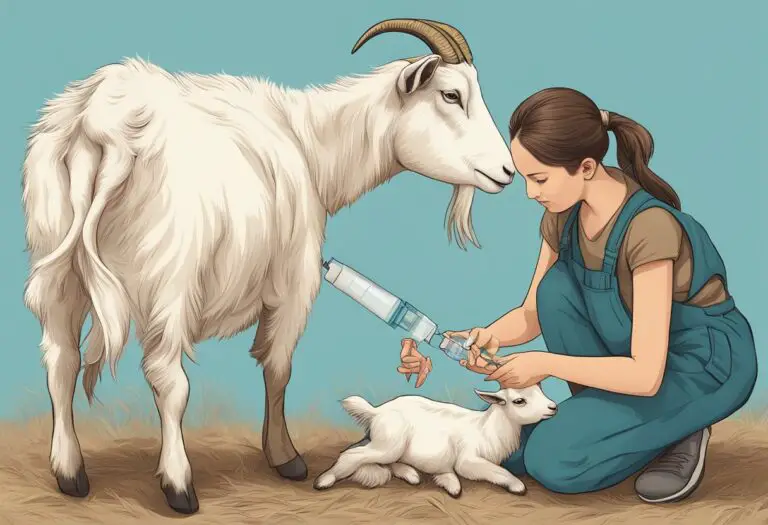Do Goats Need a Buck for Breeding? Explained
Goats are one of the most popular farm animals, and people raise them for their meat, milk, and wool. Breeding goats is an essential part of goat farming, and many farmers are often confused about whether they need a buck or not for breeding. While it is true that a buck is necessary to breed female goats, there are other options available for farmers who do not want to keep a male goat on their farm.
Male goats, also known as bucks, are responsible for fertilizing female goats, also known as does. The female goats go into heat every 21 days, and during this time, they are ready to mate. If a buck is available, he will mount the doe and mate with her, resulting in pregnancy. However, keeping a buck on the farm can be challenging as they can be aggressive, and their smell can be overwhelming. Additionally, bucks need to be separated from the does to prevent unwanted breeding, which can be challenging for farmers with limited space.
Fortunately, artificial insemination is a viable option for farmers who do not want to keep a buck on their farm. Artificial insemination involves collecting semen from a buck and then using it to inseminate a doe. This process is less labor-intensive and can result in higher-quality offspring. However, it can be costly and requires specialized equipment and knowledge. Overall, farmers have options when it comes to breeding goats, and it is essential to consider the pros and cons of each method before making a decision.
Understanding Goat Breeding

The Role of a Buck
Breeding is an important aspect of goat farming. A buck is a male goat that plays a crucial role in goat breeding. The buck’s primary function is to mate with the does to produce offspring. Bucks are typically larger and more muscular than does and have a distinct odor that attracts the does during the breeding season.
Bucks reach sexual maturity at around six months of age, and they can breed throughout the year. However, it is advisable to breed them only during the breeding season, which typically occurs in the fall and winter months. Bucks can breed with multiple does in a single breeding season, and their sperm can remain viable for up to six weeks.
Natural Breeding Process
The natural breeding process involves allowing the buck and the does to mate naturally. The buck is introduced to the does during the breeding season, and he will typically display his dominance by head-butting and mounting the does. Once the buck has mated with the does, the gestation period begins, which lasts for approximately 150 days.
It is essential to ensure that the buck is healthy and free from any diseases or infections before breeding. It is also advisable to separate the buck from the does after the breeding season to prevent any unwanted pregnancies.
In conclusion, a buck plays a vital role in goat breeding. Understanding the breeding process and the role of the buck is essential for successful goat farming.
Breeding Without a Buck

Breeding goats is an essential part of goat farming. While bucks are traditionally used for breeding, there are other options available for farmers who do not have access to a buck. In this section, we will explore the benefits and challenges of breeding goats without a buck.
Artificial Insemination
Artificial insemination is a technique that involves the use of semen from a buck to impregnate a doe. This technique has been used successfully in many species, including goats. The process involves collecting semen from a buck and then inserting it into the doe’s reproductive tract using a catheter.
One of the benefits of artificial insemination is that it allows farmers to use superior genetics without having to own a buck. This can help improve the quality of the herd and increase productivity. However, artificial insemination can be challenging and requires specialized equipment and expertise.
Benefits and Challenges
Breeding goats without a buck has several benefits and challenges. One of the benefits is that it allows farmers to manage their herds more efficiently. Farmers can control the breeding process and ensure that their does are bred at the optimal time.
Another benefit is that it reduces the risk of injury to the does. Bucks can be aggressive during breeding season, and injuries are not uncommon. By using artificial insemination or other breeding methods, farmers can reduce the risk of injury to their does.
However, breeding goats without a buck also has several challenges. One of the biggest challenges is the cost. Artificial insemination can be expensive, and farmers must have specialized equipment and expertise to perform the procedure.
Another challenge is the availability of semen. Farmers must have access to high-quality semen from a reputable source. This can be difficult in some areas, and farmers may need to travel long distances to obtain semen.
In conclusion, breeding goats without a buck is possible, but it requires specialized equipment and expertise. Farmers must weigh the benefits and challenges of different breeding methods and choose the one that works best for their operation.
Goat Reproduction Cycle

Goats are seasonal breeders, which means that they have a specific breeding season. The reproduction cycle of goats is influenced by various factors such as age, breed, and environmental conditions. Understanding the goat reproduction cycle is essential for successful breeding and production.
Estrus and Rut Periods
Estrus is the period when the female goat is receptive to mating. This period is also known as the heat period. The estrus cycle of goats lasts for about 21 days, and the doe will come into heat every 18-24 days. During this period, the doe may show signs such as restlessness, frequent urination, and vocalization.
On the other hand, rut is the period when the male goat is sexually active. The rut period usually occurs during the breeding season, and the buck will show signs such as aggression, frequent urination, and vocalization.
Breeding Seasonality
The breeding season of goats varies depending on the breed, geographic location, and environmental conditions. Generally, the breeding season of goats is during the fall and winter months, with the peak breeding season occurring in late fall.
It is essential to note that bucks can produce viable sperm year-round, but the quality and quantity of sperm are affected by the season. Therefore, it is recommended to breed goats during the breeding season for optimal breeding success.
In conclusion, understanding the goat reproduction cycle is crucial for successful breeding and production. By knowing the estrus and rut periods and the breeding seasonality of goats, breeders can make informed decisions regarding breeding and production.
Managing Goat Breeding

Selecting a Buck for Breeding
When it comes to breeding goats, selecting the right buck is crucial. The buck should be healthy, strong, and have desirable traits that will improve the offspring. It’s essential to choose a buck that has been tested negative for diseases such as CAE, CL, and Johne’s disease.
Additionally, it’s essential to consider the buck’s size and breed characteristics. The buck should be of similar size to the does to avoid any complications during breeding. It’s also important to choose a buck that has desirable breed characteristics such as good conformation and a friendly temperament.
Breeding Age and Health Considerations
Goats can start breeding as early as four months old, but it’s best to wait until they are at least six to eight months old. Before breeding, it’s crucial to ensure that both the buck and doe are in good health. They should be free of any diseases and parasites and be up to date on their vaccinations.
It’s also important to ensure that the doe is in good body condition before breeding. A doe that is too thin or too fat may have difficulty conceiving or carrying the pregnancy to term. It’s recommended to have a veterinarian perform a pre-breeding exam on both the buck and doe to ensure they are in optimal health.
In conclusion, managing goat breeding requires careful consideration of the buck’s selection, breeding age, and health considerations. By selecting a healthy and desirable buck and ensuring both the buck and doe are in good health, breeders can increase the chances of producing healthy offspring.
Maximizing Breeding Success

Breeding goats can be a challenging task, but with proper management, it can be a rewarding experience. Maximizing breeding success requires a combination of factors, including nutrition, environment, record-keeping, and monitoring.
Nutrition and Environment
Proper nutrition and a clean environment are crucial for breeding success. Goats require a balanced diet that includes adequate protein, energy, vitamins, and minerals. The diet should be adjusted based on the goat’s age, weight, and reproductive status. A lack of proper nutrition can lead to poor breeding results, including low conception rates and weak kids.
In addition to nutrition, the environment plays a critical role in breeding success. Goats require a clean and comfortable living space that is free from stressors such as excessive noise, overcrowding, and poor ventilation. Providing a suitable environment will help to reduce stress and increase the likelihood of successful breeding.
Record Keeping and Monitoring
Record keeping and monitoring are essential for maximizing breeding success. Keeping accurate records of breeding dates, kidding dates, and health status can help to identify potential issues and allow for timely intervention. Monitoring breeding behavior, such as heat cycles and mating behavior, can also help to identify potential issues and ensure that breeding is occurring at the optimal time.
Regular monitoring of the goat’s health status is also critical for breeding success. Health issues such as parasites, infections, and nutritional deficiencies can negatively impact breeding success. Regular veterinary check-ups and preventative measures such as vaccinations and deworming can help to ensure that goats remain healthy and productive.
In conclusion, maximizing breeding success requires a combination of factors, including proper nutrition, a suitable environment, record-keeping, and monitoring. By implementing these strategies, goat breeders can increase the likelihood of successful breeding and produce healthy kids.



